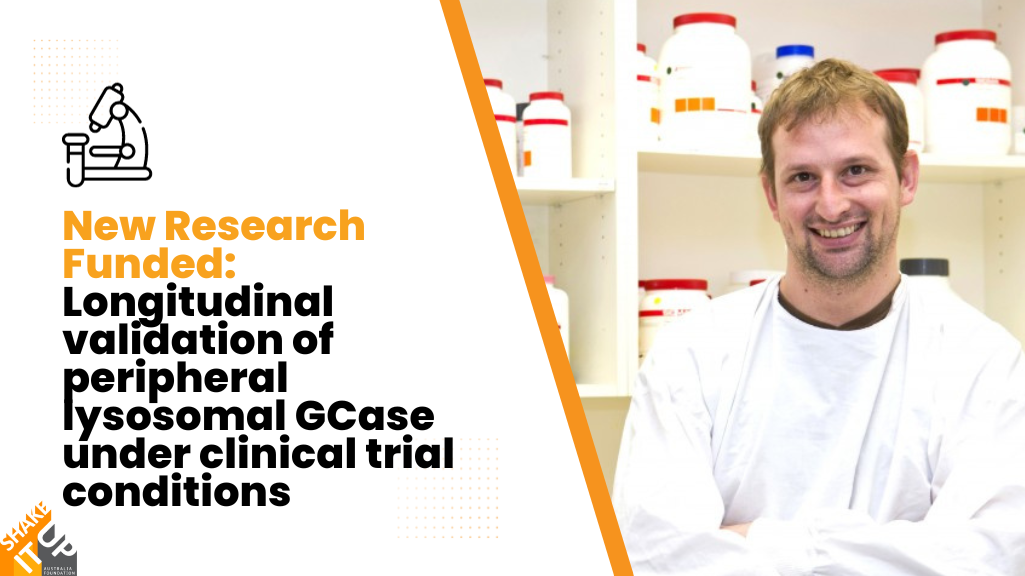Thursday, 16th November 2023

Shake It Up was thrilled to announce funding for a new research project led by Dr Nicolas Dzamko, PhD, Senior Research Fellow, Brain and Mind Centre. With collaborators including Antony Cooper (Garvan Institute); Simon J.G. Lewis (University of Sydney), Glenda Halliday (University of Sydney) and Justin O’Sullivan (University of Auckland), the research project aims to further validate peripheral monocyte in situ lysosomal GCase activity as a Parkinson’s biomarker.
We spoke with Dr Nicolas Dzamko to understand what this research means for people living with Parkinson’s – now and into the future.
Good question. Peripheral is easy, this just means in the blood and not in the brain (which we call central). GCase is our scientific abbreviation for the protein glucocerebrosidase. This is a protein in everyone’s blood cells that helps to breakdown lipids (fats). Differences in the activity of GCase (i.e. its ability to break down lipids) are one of the most common risk factors for developing Parkinson’s disease. As a result there are a lot of companies developing drugs that can increase GCase activity with the idea that they will help treat Parkinson’s. The GCase protein resides in a part of the cell called the lysosome. This is generally referred to as the ‘garbage bin of the cell’ as the lysosome is important for clearing out the waste. Because the GCase protein does it’s work in the lysosome, this is where we want to measure its activity.
So, in this project we will measure the ability to break down lipids by the GCase protein inside the lysosomes of blood cells.
Because it is a major risk factor for developing Parkinson’s disease, there is a lot of interest in the protein glucocerebrosidase, or GCase for short.
Our team and others have found that the activity of GCase can be reduced in the blood of people with Parkinson’s. But this can be quite variable, and many Parkinson’s patients seem to have normal GCase activity. One thing that is difficult about measuring things in the blood is how variable they can be on a day to day basis.
This project will be different from what has been done before, in that we will use blood samples that have been collected from the same donors at multiple times over a one year period, as part of the Australian Parkinson’s Mission. This will allow us to measure how the GCase activity changes over time, and how this relates to any changes in Parkinson’s disease symptoms over time.
While we cannot predict the future, we do know that the measurements being developed as part of this research grant may allow for the monitoring of GCase activity in clinical trials, and tell us how well potential new GCase activating drugs may work across different individuals.
An exciting outcome would be if we can identify Parkinson’s patients with low GCase activity, that may benefit most from particular drug treatments and would be suitable for clinical trials.
We could then identify and sort people into clinical trials of drugs that are most likely to work with their particular Parkinson’s symptoms. This is considered to be a future direction that could increase the success of clinical trials.
We are so grateful to the Shake It Up Foundation and all their donors for this research grant. We will be busy finishing off the collection of the blood samples and then we will be busy measuring the activity of the GCase protein and analysing all the data. If the results remain promising, we need to think about how we would integrate this biomarker assay into clinical trials around the world!